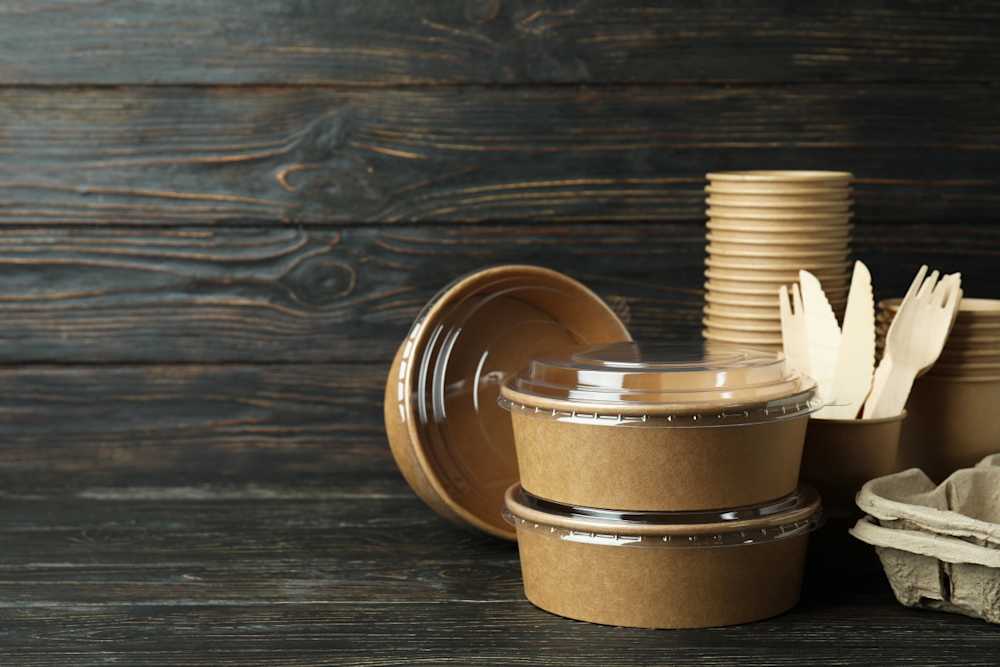Mounting evidence on the detrimental health and environmental effects of persistent per- and polyfluoroalkyl substances (PFAS) has led to a tightening regulatory environment over the past years. Food packaging is a key focus of several recent and upcoming PFAS restrictions, reflecting concerns that the chemicals are transferred from packaging to food and are further ingested by consumers.
This article summarizes PFAS regulations on food packaging and other contact materials in the EU and the US. Compliance testing options, accounting for the technical infeasibility of detecting thousands of PFAS compounds individually, will also be discussed.
EU restrictions on PFAS in food packaging
The new EU Packaging and Packaging Waste Regulation (PPWR) will ban PFAS in food packaging from August 12th, 2026.1 The ban is based on the reasoning that PFAS exposure through food contact materials presents "an unacceptable risk for human health."
The restriction specified in the PPWR will prohibit any food packaging that contains PFAS in concentrations at or above the following:
25 ppb for any compound measured with targeted PFAS analysis
250 ppb for the sum of PFAS measured with targeted analysis
50 ppm for total fluorine originating from PFAS sources
The regulation defines PFAS as "any substance that contains at least one fully fluorinated methyl (CF3-) or methylene (-CF2-) carbon atom (without any H/Cl/Br/I attached to it)," except when they contain certain structural elements. It does not, however, list compounds that should be included in the targeted PFAS analysis.
Until the restriction takes effect, certain PFAS can still be used in food contact articles, subject to restrictions specified in the applicable harmonized or national regulations. For example, the authorized starting substance list in Annex I to the Plastics Regulation (EU) No 10/2011 contains several substances classified as PFAS. Use is mostly authorized for repeated-use materials rather than single-use packaging.2
Restrictions on PFAS in food packaging in the US
The U.S. Food & Drug Administration (FDA) announced in February 2024 that food packaging manufacturers had agreed to no longer sell PFAS-containing grease-proof packaging following a voluntary phase-out. The food contact notifications (FCNs) formerly authorizing such use were subsequently withdrawn in January 2025, effectively formalizing the ban.3
Several U.S. states have also introduced their own prohibitions on PFAS in food packaging. These include California, Colorado, Minnesota, New York, and Washington, among others.
Apart from California, the state-level regulations do not outline clear compliance criteria, such as PFAS compounds that should be monitored or concentration limits that should not be exceeded. According to the California Health & Safety Code § 109000, PFAS presence is to be measured as total organic fluorine (TOF), and TOF content must not exceed 100 ppm.4
How can compliance be assessed?
From a compliance testing perspective, the challenge with both EU and US restrictions on PFAS in food packaging is the absence of full compliance criteria, particularly regarding substances that should be included in a targeted analysis. This can make it difficult for manufacturers to convincingly demonstrate that their food packaging is PFAS-free.
Measurlabs has extensive experience working with packaging manufacturers to verify the absence of PFAS. Our recommended approach is to combine TOF analysis with an extended targeted screening of 164 PFAS compounds with LC-MS/MS and GC-MS/MS. Together, these tests can be used to show that total organic fluorine content falls below the 50 ppm or 100 ppm thresholds and that the material does not contain high-profile PFAS in detectable amounts.
You can get a quote for testing your company’s material by contacting us through the form below. For a customer reference, see this story about how we helped Nordic biobased packaging innovator Sulapac verify the absence of PFAS in their products.
References
1 Paragraph 5 of Article 5 of the PPWR (Regulation (EU) 2025/40) specifies the conditions of the restriction and defines PFAS.
2 See Annex I of the most recent consolidated version of Regulation (EU) No 10/2011 for authorized PFAS and conditions for their use.
3 FDA landing page: Authorized Uses of PFAS in Food Contact Applications. Other contact materials, such as non-stick pots and pans, can still contain PFAS, as the migration potential is low.
4 Cal. Health & Saf. Code § 109000

